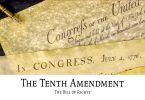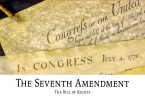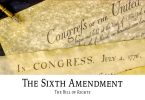When the Articles of Confederation were worked over into the Constitution, there were several members of ratifying committees in the states that would only vote to ratify the Constitution if it included a bill of rights for the people. The Constitutional Convention promised this, and in exchange, they got the votes they needed to ratify the Constitution as the law of the land for the new nation of America. As promised, the Bill of Rights was added after ratification, and it became the first ten amendments to the Constitution. The Bill of Rights was officially ratified and added to the Constitution on December 15, 1791.
These are the amendments of the Bill of Rights as they were written, and with a little meaning behind each of them.
The First Amendment
The first amendment reads:
Congress shall make no law respecting an establishment of religion, or prohibiting the free exercise thereof; or abridging the freedom of speech, or of the press; or the right of the people peaceably to assemble, and to petition the Government for a redress of grievances.
This is a short and simple amendment in presentation, but it says a lot in just a few words. In fact, many political scientists, Constitutional scholars, and even laypeople consider this the most important of the amendments that comprise the Bill of Rights.
The first part of the amendment deals with religion. In England, from which the United States had just broken away, there was an official church of the nation—the Anglican Church, also known as the Church of England that was similar to the Roman Catholic Church. This meant that religion was highly regimented there, and controlled by the government. Those who were truly Christians had to do so underground. The religion clause of this amendment simply means that the US government cannot establish an official religion or church of the United States. It takes the role of religion out of the government, so the people can worship freely.
The freedom of speech and of the press clauses are next in this amendment. The Founding Fathers recognized that these two things were paramount to a free society. In England, one could not speak out against the government, or publish anything critical of it, without the risk of severe punishment. This ensures the government will not interfere with people’s freedom of speech, or with the freedom of the press to publish what they like, whether it is critical of the government or not.
This does not mean, however, that these freedoms are absolute, only that the government will not interfere with them. Private companies and institutions (and individuals in their own homes), can censor speech on their property. This is why private companies like Facebook, Twitter, and Instagram can censor speech because they are not the government. They are private companies and can do what they like. The press can be sued for libel by private individuals, but the government cannot control what the press publishes.
Finally, this amendment gives the people the right to peaceably assemble and to petition the government for a redress of grievances. The right to peacefully protest is a fundamental First Amendment right, as is telling the government in writing what you want and why. The keyword here is peaceable. Once a gathering or assembly becomes un-peaceful, or when threatening words are used in a petition for the redress of grievances, then that is not protected under the First Amendment.




